Sponsored by Mabion
Biopharma manufacturing is a complex and capital-intensive industry where cost optimization is a key driver of long-term success. As demand for biologics continues to rise, manufacturers must balance cost reduction with stringent quality standards, regulatory compliance, and process scalability. The challenge lies in identifying and addressing inefficiencies across the entire development and production pipeline. Companies that proactively implement cost-saving strategies while maintaining operational flexibility will gain a competitive advantage in an increasingly price-sensitive market.
The Balancing Act: Cost Reduction Without Compromising Quality
One of the most significant cost considerations in biopharma production is determining whether to maintain in-house manufacturing capabilities or outsource to contract development and manufacturing organizations (CDMOs).
Understanding Cost Drivers in Biologics Development
While outsourcing biopharmaceutical manufacturing to a CDMO may appear cost-effective at first glance, companies must assess the long-term trade-offs compared to maintaining in- house production. A comprehensive cost model should incorporate expenses such as raw materials, facility maintenance, labor, and operational inefficiencies, as these factors determine the true cost of production. In-house production allows for better oversight of these cost drivers, potentially leading to efficiency gains over time. However, the initial capital investment and the need for specialized expertise can create a steep financial barrier. In contrast, outsourcing to a CDMO reduces upfront capital expenditure, as companies leverage the expertise and established facilities of external partners, but it comes with trade- offs such as reduced operational control and potential long-term costs linked to service agreements. Service providers propose a plug-and-play solution with pre-established manufacturing frameworks and often include hidden costs such as technology transfer fees, batch delays, and inflexible contract terms that limit process optimization.
Identifying hidden costs is critical to ensuring an accurate cost comparison between in-house and outsourced manufacturing. In-house operations face challenges such as excessive inventory holdings, energy-intensive processes, and production inefficiencies that can inflate overall costs. Conversely, outsourcing introduces risks like unanticipated service charges, longer production lead times, and potential quality control issues that may require costly rework. The key is to quantify these risks and incorporate them into financial models to make an informed decision.
Ultimately, companies must take a holistic approach to cost reduction, weighing the benefits of control and flexibility in in-house manufacturing against the operational efficiencies and scalability of CDMOs. One emerging strategy is a phased approach, where early-stage development and small-scale production are managed internally, while large-scale commercial manufacturing is outsourced to leverage CDMO efficiencies. This method allows companies to refine their processes early while avoiding the substantial capital investments associated with full-scale in-house manufacturing. By addressing hidden costs and inefficiencies proactively, companies can create a sustainable cost structure that aligns with both their financial goals and long-term manufacturing strategy.
Identifying Cost Bottlenecks from R&D to GMP Production
The high costs of early-stage biologics development primarily stem from the complexity of discovery, specialized infrastructure, and long timelines for cell line and process development. Establishing a robust, high-yielding cell line alone can take up to a year, with associated costs spanning media optimization, stability testing, and clone selection. Many companies invest heavily in proprietary platforms to enhance their cell line development efficiency, but this approach can be cost-prohibitive without guaranteed success. An alternative strategy is to leverage pre-optimized expression systems or license commercially available high-productivity cell lines to accelerate early-stage development and reduce associated costs. Additionally, leveraging external partnerships or consortia for early-phase development can distribute financial risk and allow for more efficient allocation of internal Resources.

In upstream and downstream processing, inefficiencies contribute to significant cost escalations, particularly when batch failures or suboptimal purification strategies lead to material wastage. In upstream operations, optimizing bioreactor conditions, implementing fed-batch or perfusion strategies, and standardizing process control parameters can improve yield consistency and lower production costs. Meanwhile, downstream purification remains one of the most expensive steps due to high resin costs, limited column lifetimes, and inefficient buffer usage. Companies must focus on standardizing workflows and minimizing unnecessary process redundancies to improve operational efficiency.
Lean Manufacturing in Biopharma
Lean manufacturing, originally developed in the automotive industry, has become a game- changer in biopharmaceutical production, offering systematic methodologies to minimize waste, enhance productivity, and streamline workflows. This methodology provides a structured eliminating non-value-added activities, optimizing production processes, and improving workforce efficiency.
Implementing Lean and Six Sigma in Bioprocessing
Implementing Six Sigma methodologies in bioprocessing and biomanufacturing enables companies to systematically identify and eliminate inconsistencies in critical production steps. The structured Define, Measure, Analyze, Improve, and Control (DMAIC) framework helps pinpoint process variations that can lead to batch failures, low yields, or excessive raw material usage. By leveraging statistical analysis and root cause investigation, biopharma companies can enhance consistency, minimize deviations, and optimize process parameters.
For example, applying Six Sigma tools such as Failure Mode and Effects Analysis (FMEA) can proactively identify potential risks in upstream cell culture or downstream purification, allowing for corrective actions before costly failures occur.
Maximizing Asset Utilization Through Multi-Product Facilities
In multi-product biomanufacturing, the ability to anticipate and adjust to shifting demand is critical for maintaining cost efficiency. Predictive analytics offers manufacturers a powerful tool to model demand forecasts, assess production constraints, and allocate resources accordingly. By leveraging machine learning algorithms and historical batch data, companies can optimize production schedules, minimize stockouts, and reduce excess inventory. This approach ensures that equipment and facility assets are used at peak efficiency, preventing unnecessary downtime and maximizing revenue potential. Research has shown several effective tactics in this regard. Kaizen events provide a structured methodology for addressing inefficiencies in real time, fostering a culture of continuous improvement across biopharma operations. These focused workshops enable employees to collaborate on process optimization initiatives, tackling pain points such as inefficient material handling, excessive equipment downtime, or suboptimal batch scheduling. Value stream mapping enables biopharma manufacturers to identify and eliminate bottlenecks by visualizing the entire end-to-end production process. By systematically eliminating non-value-adding steps, companies can accelerate production timelines, optimize facility utilization, and enhance overall manufacturing agility, positioning themselves for sustained competitiveness in the biologics sector.
A well-structured flexible production scheduling system allows facilities to seamlessly transition between different biologics while maintaining high operational efficiency. Implementing advanced manufacturing execution systems (MES) enables real-time tracking of batch progress and predictive scheduling adjustments, ensuring minimal downtime between production runs. By optimizing facility layouts and using shared equipment across multiple product lines, manufacturers can reduce the need for costly facility expansions while enhancing throughput. This adaptability is particularly valuable for CDMOs, where multiple clients require varying batch sizes and production priorities.
Strategies for Cost-Effective Process Development
Every project is different, but there are several universal ways for biopharma companies to cut costs.
High-Yield Cell Lines
The foundation of cost-effective biologics manufacturing lies in rigorous cell line screening during early-stage research. Identifying high-producing clones through a combination of fluorescence-activated cell sorting (FACS), omics-based analysis, and high-throughput productivity assays allows biopharma companies to optimize their selection process. Screening for key attributes such as stability over multiple passages, rapid proliferation rates, and resistance to stress conditions ensures that only the most robust clones advance to process development.
Maximizing protein expression per unit cost requires a strategic approach that balances genetic optimization with process intensification. Engineering host cells with enhanced transcriptional and translational machinery—such as stronger promoter sequences and codon optimization—can significantly improve recombinant protein yield without increasing culture volumes. Additionally, leveraging metabolic engineering to fine-tune nutrient uptake and waste metabolism further enhances productivity. Process intensification strategies, such as high-density perfusion cultures and dynamic feeding regimens, enable companies to produce higher titers while using fewer resources, ultimately lowering cost per gram of biologic product.
Bioprocessing Platforms for Faster Development
A key advantage of integrated continuous bioprocessing is its ability to streamline upstream production, enabling constant cell growth and protein expression while eliminating the need for multiple batch startups and shutdowns. Traditional batch bioreactors require frequent downtime for media replenishment, harvesting, and cleaning, leading to inefficiencies and higher operational costs. Continuous bioreactors, in contrast, allow for steady-state operation, where cells remain in optimal growth conditions for extended periods. This results in improved cell viability, higher volumetric productivity, and lower overall production costs. By eliminating the need for repeated batch setups and shutdowns, companies can maximize equipment utilization and achieve a more cost-effective biomanufacturing process.
Downstream processing is another critical area where continuous bioprocessing platforms significantly enhance development speed and cost efficiency. Traditional batch chromatography and filtration steps often create bottlenecks, as purification processes must be stopped between batches, increasing cycle times and requiring extensive cleaning procedures. In contrast, continuous downstream purification ensures a steady flow of material, eliminating delays between purification runs.
Scalable Process Design for Flexible Manufacturing
Adopting modular bioprocess platforms that can be customized according to production demand is one strategy for scalability. By implementing single-use bioreactors and interchangeable downstream purification systems, manufacturers can scale production volumes up or down without extensive facility modifications. This flexibility ensures that companies can respond quickly to market needs, optimizing resource utilization while minimizing capital investment in fixed infrastructure.

Flexible manufacturing process requires an agile facility design that supports multi-product production with minimal downtime. Incorporating automated process control systems enables real-time monitoring and optimization, reducing the risks associated with scaling production.
By investing in scalable process design, biopharma manufacturers can future-proof their operations, ensuring they can adapt to changing market dynamics and increasing demand without excessive financial burden.
Continuous vs. Batch Purification Approaches
The choice between continuous and batch purification approaches is a critical decision in biopharmaceutical manufacturing, requiring a thorough evaluation of cost-effectiveness and scalability. Batch purification, while widely used, often results in process inefficiencies, including high buffer usage, long cycle times, and underutilized chromatography resins. In contrast, continuous chromatography offers improved resin efficiency, reduced buffer consumption, and shorter cycle times, leading to significant cost savings in large-scale production. However, continuous purification requires advanced process control and automation, making it more complex to implement. The cost-benefit trade-off largely depends on production volume, process flexibility, and the long-term financial impact of reduced operational expenses.
While continuous purification offers significant efficiency gains, the transition from batch- based systems requires overcoming technical and logistical challenges. Companies must evaluate the feasibility of integrating continuous chromatography with existing upstream processes, ensuring seamless process synchronization. Additionally, continuous purification.
While continuous purification offers significant efficiency gains, the transition from batch- based systems requires overcoming technical and logistical challenges. Companies must evaluate the feasibility of integrating continuous chromatography with existing upstream processes, ensuring seamless process synchronization. Additionally, continuous purification systems require advanced process analytics and real-time control mechanisms to maintain product quality and regulatory compliance.
Strategic Sourcing and Supplier Partnerships
For biopharma manufacturers, streamlining supply chain management is essential for maintaining cost efficiency and ensuring uninterrupted production. Consolidating supplier networks allows companies to reduce variability in raw material quality, negotiate bulk discounts, and simplify procurement logistics. This approach also enhances operational flexibility, enabling manufacturers to better respond to fluctuations in demand while keeping procurement costs low.
Risk mitigation is a crucial factor in strategic sourcing, as supply chain disruptions can lead to costly delays in biologics production. Diversifying sourcing strategies by engaging multiple suppliers across different regions reduces dependency on a single provider and enhances resilience against market fluctuations, regulatory changes, and geopolitical uncertainties.
Streamlined Supply Chain Management for Cost Efficiency
By working with a select group of reliable suppliers, manufacturers can optimize inventory management and improve forecasting accuracy.
Establishing long-term contracts with key suppliers provides financial stability and supply security while fostering collaborative innovation. Multi-year agreements enable manufacturers to negotiate predictable pricing structures, helping to manage costs effectively despite market fluctuations. These partnerships also create opportunities for collaborative innovation, where suppliers and manufacturers work together to optimize material formulations, reduce waste, and improve logistics efficiency. Investing in strategic supplier relationships fosters trust, encourages better service levels, and ensures that biomanufacturers can maintain high-quality standards while keeping costs under control.
Conclusion
Optimizing development and manufacturing costs in biopharmaceutical production requires a comprehensive and strategic approach that balances efficiency, scalability, and quality. Whether companies choose to retain in-house capabilities or partner with CDMOs, a clear understanding of cost drivers is essential for making informed decisions. Identifying hidden costs and eliminating process bottlenecks can significantly impact profitability while ensuring that manufacturing operations remain agile and responsive to market demands. In an industry where production costs directly influence drug affordability and accessibility, companies that adopt a data-driven, efficiency-focused approach to biopharmaceutical manufacturing will be best positioned for success. By continuously refining processes, leveraging advanced manufacturing technologies, and fostering collaboration across the supply chain, biomanufacturers can achieve long-term cost efficiency while maintaining high standards of innovation, quality, and regulatory compliance.


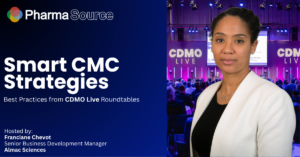

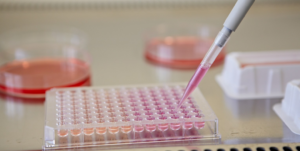
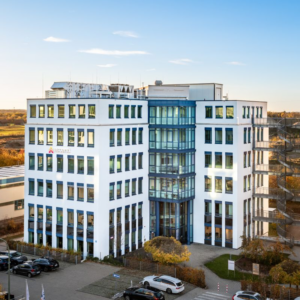

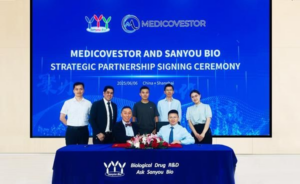



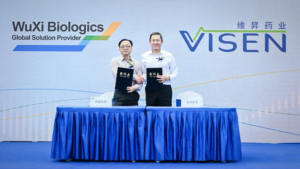
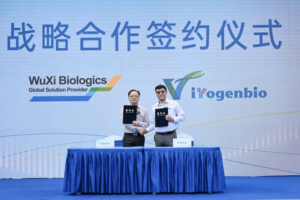

 Stay ahead of trends and best practices
Stay ahead of trends and best practices
